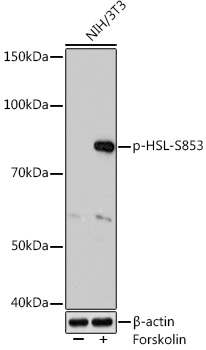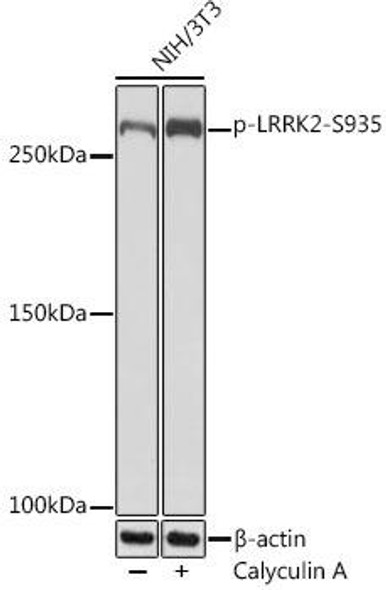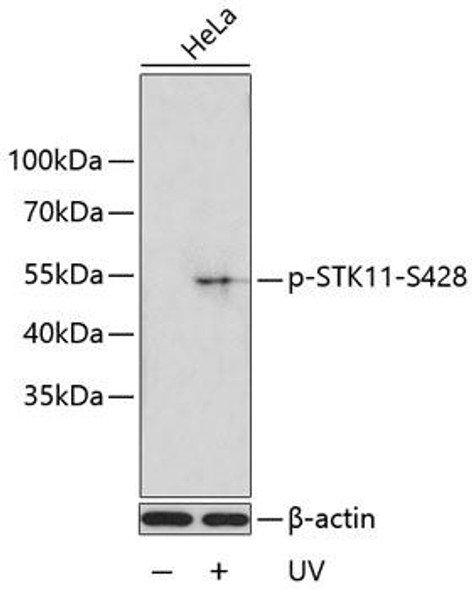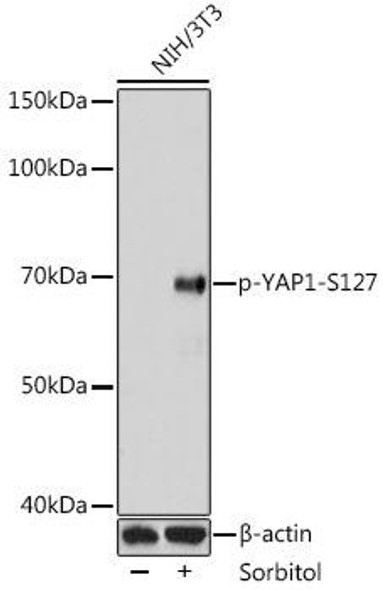Description
Anti-Phospho-HSL-S853 Antibody (CABP1151)
The Phospho-HSL (S853) Rabbit Monoclonal Antibody (CABP1151) is a high-quality antibody designed for research involving hormone-sensitive lipase (HSL) phosphorylation at serine 853. HSL is a key enzyme involved in the regulation of lipid metabolism, particularly in the breakdown of stored fats into fatty acids and glycerol.This antibody, raised in rabbits, is highly specific and sensitive for detecting phosphorylated HSL at serine 853 in human samples. It has been validated for use in Western blot applications, allowing for precise analysis of HSL phosphorylation levels in various cell types.Phosphorylation of HSL at serine 853 is known to play a crucial role in the regulation of lipid metabolism and energy homeostasis.
Dysregulation of HSL phosphorylation has been implicated in metabolic disorders such as obesity, diabetes, and cardiovascular diseases. Therefore, studying the phosphorylation status of HSL can provide valuable insights into the mechanisms underlying these conditions.Overall, the Phospho-HSL (S853) Rabbit Monoclonal Antibody (CABP1151) is a valuable tool for researchers investigating the role of HSL phosphorylation in lipid metabolism and its implications for metabolic diseases. Its high specificity and sensitivity make it an ideal choice for studies in the fields of metabolism, obesity, and metabolic disorders.
| Antibody Name: | Anti-Phospho-HSL-S853 Antibody |
| Antibody SKU: | CABP1151 |
| Antibody Size: | 20uL, 50uL, 100uL |
| Application: | WB |
| Reactivity: | Mouse |
| Host Species: | Rabbit |
| Immunogen: | A phospho specific peptide corresponding to residues surrounding S853 of human HSL (NP_005348.2 , equivalent to S563 of rat HSL) |
| Application: | WB |
| Recommended Dilution: | WB 1:500 - 1:2000 |
| Reactivity: | Mouse |
| Positive Samples: | NIH/3T3 |
| Immunogen: | A phospho specific peptide corresponding to residues surrounding S853 of human HSL (NP_005348.2 , equivalent to S563 of rat HSL) |
| Purification Method: | Affinity purification |
| Storage Buffer: | Store at -20°C. Avoid freeze / thaw cycles. Buffer: PBS with 0.02% sodium azide, 0.05% BSA, 50% glycerol, pH7.3. |
| Isotype: | IgG |
| Sequence: | Email for sequence |
| Gene ID: | 3991 |
| Uniprot: | Q05469 |
| Cellular Location: | Cell membrane, Cytoplasm, Membrane, caveola, cytosol |
| Calculated MW: | 83kDa |
| Observed MW: | 83KDa |
| Synonyms: | AOMS4, FPLD6, HSL, LHS |
| Background: | The protein encoded by this gene has a long and a short form, generated by use of alternative translational start codons. The long form is expressed in steroidogenic tissues such as testis, where it converts cholesteryl esters to free cholesterol for steroid hormone production. The short form is expressed in adipose tissue, among others, where it hydrolyzes stored triglycerides to free fatty acids. [provided by RefSeq, Jul 2008] |
| UniProt Protein Function: | HSL: hormone sensitive lipase is a lipolytic enzyme of the 'GDXG' family. Plays a rate limiting step in triglyceride lipolysis. In adipose tissue and heart, it primarily hydrolyzes stored triglycerides to free fatty acids, while in steroidogenic tissues, it principally converts cholesteryl esters to free cholesterol for steroid hormone production. Rapidly activated by cAMP-dependent phosphorylation under the influence of catecholamines. Dephosphorylation and inactivation are controlled by insulin. |
| UniProt Protein Details: | Protein type:EC 3.1.1.79; Lipase Chromosomal Location of Human Ortholog: 19q13.2 Cellular Component: lipid particle Molecular Function:protein binding Biological Process: lipid catabolic process; protein amino acid phosphorylation Disease: Abdominal Obesity-metabolic Syndrome 4 |
| NCBI Summary: | The protein encoded by this gene has a long and a short form, generated by use of alternative translational start codons. The long form is expressed in steroidogenic tissues such as testis, where it converts cholesteryl esters to free cholesterol for steroid hormone production. The short form is expressed in adipose tissue, among others, where it hydrolyzes stored triglycerides to free fatty acids. [provided by RefSeq, Jul 2008] |
| UniProt Code: | Q05469 |
| NCBI GenInfo Identifier: | 145559491 |
| NCBI Gene ID: | 3991 |
| NCBI Accession: | Q05469.4 |
| UniProt Secondary Accession: | Q05469,Q3LRT2, Q6NSL7, |
| UniProt Related Accession: | Q05469 |
| Molecular Weight: | 84,128 Da |
| NCBI Full Name: | Hormone-sensitive lipase |
| NCBI Synonym Full Names: | lipase E, hormone sensitive type |
| NCBI Official Symbol: | LIPE |
| NCBI Official Synonym Symbols: | HSL; LHS; AOMS4; FPLD6 |
| NCBI Protein Information: | hormone-sensitive lipase |
| UniProt Protein Name: | Hormone-sensitive lipase |
| Protein Family: | Hormone-sensitive lipase |
| UniProt Gene Name: | LIPE |
| UniProt Entry Name: | LIPS_HUMAN |











